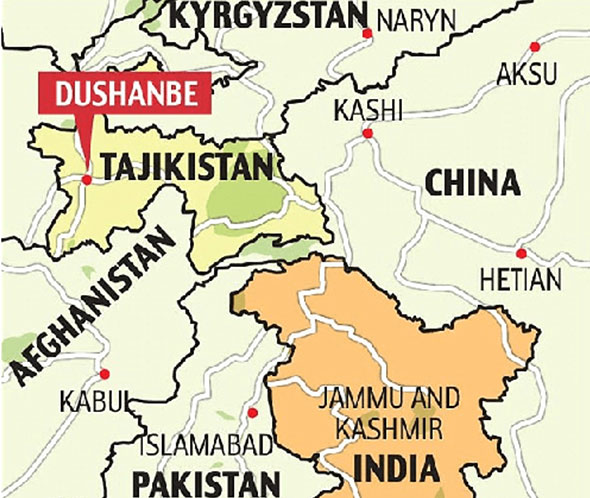India Gets In On Belt & Road Infrastructure By Building Highway In Tajikistan
India’s softly growing influence to counterbalance China’s rise in Central Asia
Op/Ed by Chris Devonshire-Ellis
India, which is not officially a member of the Belt & Road Initiative, has nonetheless been undertaking its own form of infrastructure development by both funding and building an eight-lane highway in Dushanbe, the capital city of Tajikistan.
Relations between India and Tajikistan have traditionally been close and cordial. There has been a regular exchange of high level visits and important agreements, which helped in cementing the relations. During the visit of Tajik President to India in September 2012, the two countries declared their relationship to ‘Strategic Partnership’ encompassing cooperation in a wide spectrum of areas including political, economic, education, health, human resource development, defense, counter-terrorism, science and technology, culture and tourism. Tajikistan sees India as a counterweight to China, while India is keen to reassert some sense of influence over Central Asia, an area it has neglected in more recent years.This has been generating some results. During his state visit to Tajikistan in October last year, Indian President Ram Nath Kovind announced US$20 million grants for projects to be mutually agreed upon, with the Dushanbe highway one of them.
Tajikistan Foreign Investment Opportunities
India-Tajik Bilateral-Trade
India’s main exports are pharmaceuticals, apparel and clothing accessories, handicraft, machinery and meat and meat products. Different types of ores, slag and ash, aluminum, organic chemicals, herbal oils, dried fruits and cotton are exported to India from Tajikistan.
India-Tajikistan Bilateral Trade 2017-18
| Category | Amount (US$, millions) | Growth Rate on Previous Year |
|---|---|---|
| Indian Exports | 24 | 8% |
| Tajik Exports | 50 | 120% |
There is still some way to go – China-Tajik bilateral trade is currently running at about US$2 billion per annum, while Russia-Tajik trade runs at about US$750 million. Eu-Tajik trade is about US$410 million and US-Tajik trade about US$14 million. However the Indian trend is upwards while most of the others (except China) have been slowing their bilateral trade volumes.
Tajikistan – India Fast Facts
- Flight Time Delhi-Dushanbe: 8 hours (one stop over)
- Distance Between Delhi & Tajikistan Border: 1,350km
- The populations of Bangalore, Chennai & Dushanbe are all @9 million
- India and Tajikistan have a Double Tax Treaty between them
- 1 Tajik Somoni = 7.5 Indian Rupees
India-Tajik Civil Projects
As can be seen, Indian overseas infrastructure investment pales in comparison to that of Chinese state owned behemoths, which are often funded at low rates of interest – and sometimes none at all – by the Central Government. India meanwhile has carved out a niche in its paucity by allowing a more organic development, often realizing more substantial longer term results – its finding of the Tajik Governments IT experts just one example.
About Us
Silk Road Briefing is written by Dezan Shira & Associates. Chris Devonshire-Ellis is the Practice Founding Partner. The firm assists foreign investors into Asia and has 28 offices across China, the ASEAN countries, India and along the Belt & Road Initiative. Please contact the firm at asia@dezshira.com or visit us at www.dezshira.com






